
Gustavo Bianchi (21 August 1845 - 7 October 1884) was a nineteenth-century Italian explorer. [1] He travelled in Ethiopia and Eritrea, on the eve of the Italian colonial expansion.

Gustavo Bianchi (21 August 1845 - 7 October 1884) was a nineteenth-century Italian explorer. [1] He travelled in Ethiopia and Eritrea, on the eve of the Italian colonial expansion.
He was born in Ferrara, then part of the Papal States, and grew up in nearby Argenta. He started a military career in the Italian army: he studied at the Military Academy of Modena, and took part to the Third Italian War of Independence. However, he later had to quit because of myopia, and found a job in a merchant firm in Milan. [2]
In 1876, as Orazio Antinori from the Italian Geographical Society led an exploring expedition to Ethiopia, Bianchi unsuccessfully applied to join it. Two years later however the Milan-based Society for Commercial Exploration in Africa Society for Commercial Exploration in Africa organized another journey to the area, under the direction of Pellegrino Matteucci, and this time he managed to join it. [3]
The expedition, which was financed by a consortium of Lombard industrialists, had the purpose to investigate whether the Horn of Africa could become an outlet for the sale of Italian goods. [4] The group landed in Massawa, and was supposed to travel through Northern Ethiopia before reaching Shewa, where also the Antinori expedition had arrived in the meantime. However, the political tensions between the Tigray-based Emperor Yohannes IV and King Menelik of Shewa prevented it from going any further than Gojjam. In summer 1879 all the expedition members left for Italy, except for Bianchi, who remained in the area and eventually travel to Shewa and the Oromo region. [5] He also interceded with ras Adal Tesema (an ally of Yohannes IV), in order to free another Italian explorer, Antonio Cecchi , who had been imprisoned in the southern Kingdom of Gera. [1] He came back to Italy in March 1881, and described his journey in a book published in 1884, "Alla terra dei Galla" (Into the Land of the Oromo people). [6]
His report on the commercial opportunities of Ethiopia was rather bleak, and he thought that there was little that Italy could export to the region. Nevertheless, he volunteered to lead another expedition organized by the Society for Commercial Exploration in Africa in 1883: the aim was to look for land connections between the Italian possession of Assab (by then still the only outpost that country had on the Red Sea coast) and the interior. Despite the warnings and suggestions of Yohannes IV, who had received the explorer in Debre Tabor, Bianchi chose to pursue the route he had decided in advance, and was murdered by brigands in the Danakil region. His remains were found only in 1928. [7]

The Oromo people are a Cushitic ethnic group native to the Oromia region of Ethiopia and parts of Northern Kenya. They speak the Oromo language, which is part of the Cushitic branch of the Afroasiatic language family. They are one of the largest ethnic groups in Ethiopia. According to the last Ethiopian census of 2007, the Oromo numbered 25,488,344 people or 34.5% of the Ethiopian population. Recent estimates have the Oromo comprising 45,000,000 people, or 35.8% of the total Ethiopian population estimated at 116,000,000.

Menelik II, baptised as Sahle Maryam was king of Shewa from 1866 to 1889 and Emperor of Ethiopia from 1889 to his death in 1913. At the height of his internal power and external prestige, the process of territorial expansion and creation of the modern empire-state was largely completed by 1898.

Shewa, formerly romanized as Shua, Shoa, Showa, Shuwa, is a historical region of Ethiopia which was formerly an autonomous kingdom within the Ethiopian Empire. The modern Ethiopian capital Addis Ababa is located at its center.
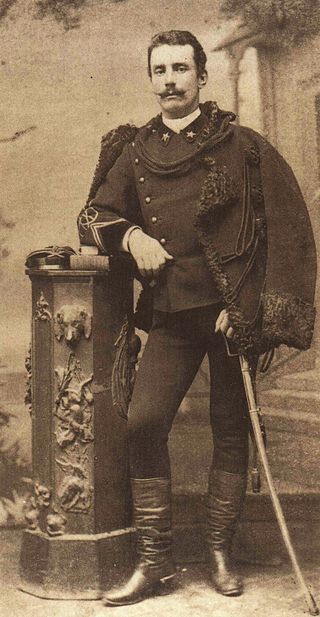
Vittorio Bottego was an Italian army officer and one of the first Western explorers of Jubaland and southern Ethiopia, where he led two expeditions. He was the first European explorer to follow the course of the lower Omo River to its confluence with Lake Turkana and to reach Lake Abaya, which he renamed Lake Margherita after Queen Margherita of Savoy wife of King Humbert I of Italy.

Yohannes IV was Emperor of Ethiopia from 1871 to his death in 1889 at the Battle of Gallabat, and king of Tigray from 1869 to 1871. During his reign he successfully defended Ethiopia against a large-scale Egyptian invasion.

Johann Ludwig Krapf was a German missionary in East Africa, as well as an explorer, linguist, and traveler. Krapf played an important role in exploring East Africa with Johannes Rebmann. They were the first Europeans to see Mount Kenya with the help of Akamba who dwelled at its slopes and Kilimanjaro. Ludwig Krapf visited Ukambani, the homeland of the Kamba people, in 1849 and again in 1850. He successfully translated the New Testament to the Kamba language. Krapf also played a key role in exploring the East African coastline, especially in Mombasa.
Giuseppe Maria Giulietti was an Italian soldier, geographer and explorer. He was born in a wealthy family in Casteggio, province of Pavia.
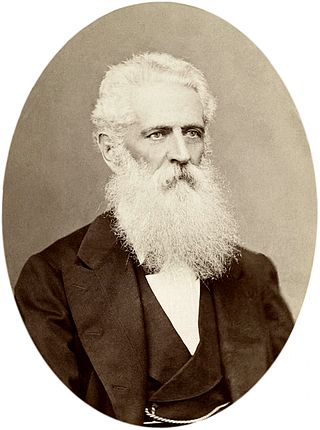
Orazio Antinori was an Italian explorer and zoologist.

The Battle of Embabo was fought 6 June 1882, between the Shewan forces of Negus Menelik and the Gojjame forces of Negus Tekle Haymanot. The forces fought to gain control over the Oromo areas south of the Gibe River. The Gojjame forces under Tekle Haymanot were defeated. This is one of the three battles which Donald Donham lists that led to Shewan supremacy over the rest of Ethiopia.

Guglielmo Massaia, OFM Cap. was an Italian cardinal of the Catholic Church who served as a missionary and a Capuchin friar.
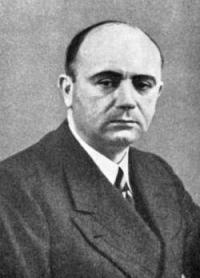
Enrico Cerulli was an Italian scholar of Somali and Ethiopian studies, a governor and a diplomat.
The Apostolic Vicariate of the Galla was a Roman Catholic Apostolic Vicariate established in 1846, and embracing the territory of the Oromo people in the Ethiopian Empire.

Ethiopia is one of the oldest countries in Africa; the emergence of Ethiopian civilization dates back thousands of years. Abyssinia or rather "Ze Etiyopia" was ruled by the Semitic Abyssinians (Habesha) composed mainly of the Amhara, Tigrayans and the Cushitic Agaw. In the Eastern escarpment of the Ethiopian highlands and more so the lowlands were the home of the Harari/Harla that founded Sultanates such as Ifat and Adal and the Afars. In the central and south were found the ancient Sidama and Semitic Gurage, among others.
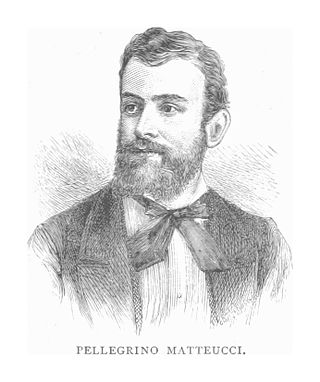
Doctor Pellegrino Matteucci was an Italian explorer known for his expeditions to Africa.

Galla-Sidamo Governorate was one of the six governorates of Italian East Africa. It was formed in 1936 from parts of the conquered Ethiopian Empire following the Second Italo-Ethiopian War with the capital was Jimma. In November 1938 some territory of Galla-Sidamo in the Scioa region was given to the neighboring Addis Abeba Governorate, enlarging it to the Scioa Governorate.
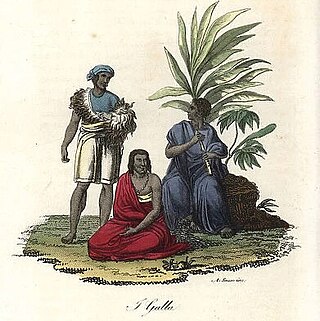
The Oromo expansions or the Oromo invasions, were a series of expansions in the 16th and 17th centuries by the Oromo. Prior to their great expansion in the 16th century, the Oromo inhabited only the area of what is now modern-day southern Ethiopia and northern Kenya. Over the centuries due to many factors, mostly the wars between the Adal Sultanate and the Ethiopian Empire would further encourage the numerous Oromo tribes to expand towards central and eastern modern Ethiopia.
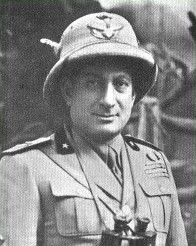
Gustavo Pesenti was an Italian general. He was Italian colonial governor of Somaliland.
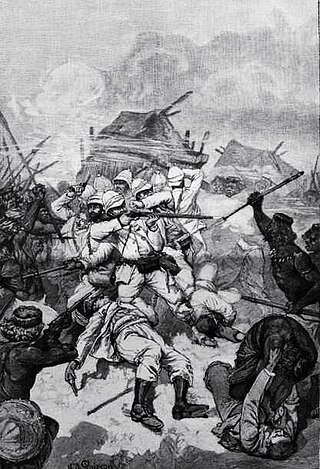
The Italo-Ethiopian War of 1887–1889 was an undeclared war between the Kingdom of Italy and the Ethiopian Empire occurring during the Italian colonization of Eritrea. The conflict ended with a treaty of friendship, which delimited the border between Ethiopia and Italian Eritrea but contained clauses whose different interpretations led to another Italo-Ethiopian war.
Corrado Govoni. was an Italian poet. His work dealt with modern urban representations, the states of memory, nostalgia, and longing, using an expressive and evocative style of writing.
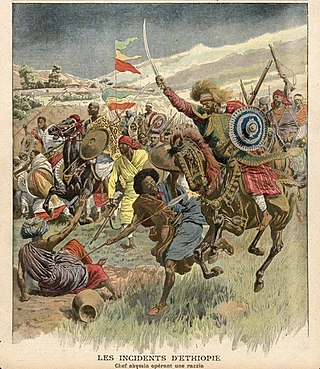
Menelik II's conquests, also known as the Agar Maqnat, were a series of expansionist wars and conquests carried out by Emperor Menelik II of Shewa to expand the Ethiopian Empire.